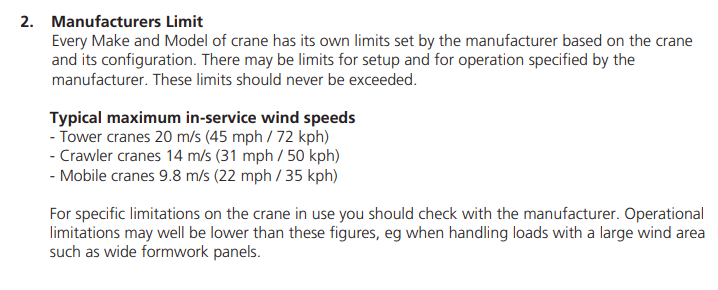WARose
Structural
- Mar 17, 2011
- 5,593
I have a heavy lift crane that will be operating on a project of mine. I have been asked to look at it to determine a safe operating wind speed. (The manufacturer refuses to provide it and OSHA regs do not (as far as I can tell) dictate it either unless you are lifting personnel. I am not lifting any people.....just load.)
Aside from my calculations on stability......does anyone know of a limiting reg by any government organization? Thanks.
Aside from my calculations on stability......does anyone know of a limiting reg by any government organization? Thanks.


![[smile] [smile] [smile]](/data/assets/smilies/smile.gif)